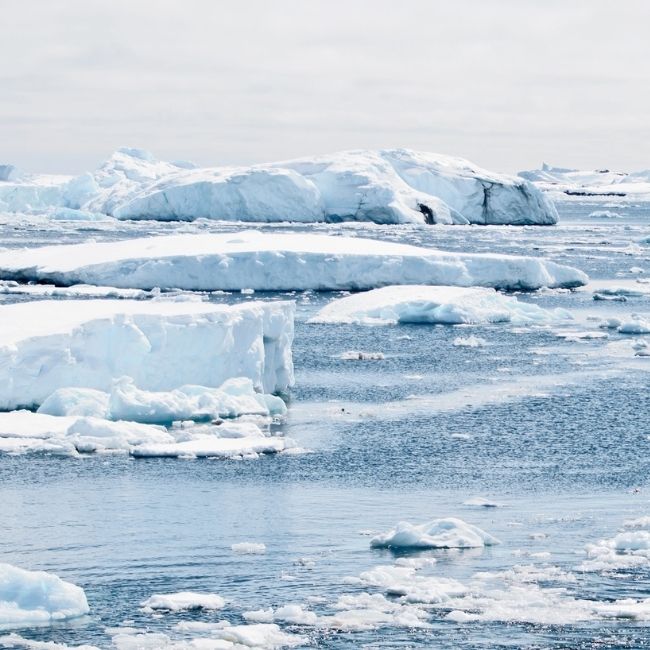
Inspirational women have places in Antarctica honouring them
Recommended for Secondary Grades
Women in Antarctica have places named for themselves
Men have been exploring Antarctica for over a century. Earlier, women were not allowed to step on the Antarctic land. Norwegian Ingrid Christensen was the first woman who stepped foot on Antarctica in 1937.
Prominent landmarks in Antarctica named after women
Prominent women in Antarctica have got places named after them and are truly inspirational.
- Fricker Ice Piedmont: It is a coastal land that is covered in ice alongside Antarctica’s Adelaide Island. This place is named after American Helen Amanda Fricker who is a glaciologist in California. She uses satellite data to study the evolution of Antarctica’s ice loss, that is, the melting of ice sheets and glaciers. In 2010, Helen Fricker won Martha Muse Prize for Science and Policy. This prize recognizes the contributions of the individuals whose work promotes understanding of Antarctica for future generations.
- Klenova Peak: It is a 7,546-foot tall Klenova Peak that is a part of the Sentinel mountain range. This place is named after Maria Klenova who is a geologist. She earned the nickname Mother of Marine Geology for her work. She analysed Antarctica’s seabed geology by using oceanographic measurements. Klenova Peak became the first woman scientist to do work in Antarctica.
- Bernasconi Cove: It is a stretch of snow-covered summits which extend from the Antarctic Peninsula into the Weddell Sea. It is named for Irene Bernasconi. Irene is a marine biologist. She studied marine animals such as starfish, sea urchins and brittle stars. She was one of four female scientists who travelled to Antarctica in 1968 and spent two and half months at Melchior Base on the coast of the Antarctic Peninsula.
- Jones Terrace: Lois M Jones is a geochemist. She led the team of the all-female research team from the US to work in Antarctica. Lois Jones and her team had studied chemical weathering in the McMurdo Dry Valleys, which is one of the few ice-free areas of Antarctica.
- Bradshaw Peak: Bradshaw peak has a height of 5,380 feet and it is situated on the McLay Glacier in Antarctica’s Churchill Mountains. This peak honours Margaret Bradshaw who’s a geologist. She travelled to Antarctica from 1975 to 1976 to collect specimens for Canterbury Museums. Margaret became the first woman to lead a field party deep into the Antarctic.
- Tilav Cirque: Tilav cirque is located on the North-West side of the McLean Buttress in Eastern Antarctica. It honours Scrap Z. Tilav who was a Turkish astrophysicist. She spent multiple seasons on the Antarctic continent as a member of the United States Antarctic Program. Her work was the part of Antarctic Muon and Neutrino Detector Array (AMANDA) project.
- Mount Fiennes: Mount Fiennes is 8,202 foot high mountain and it is located on Antarctica’s largest island, Alexander island. It honours adventurer Lady Virginina She established 80 foot tall radio masts in both the Arctic and Antarctic regions.
- Francis Peak: Francis Peak is 3,727 feet tall and is situated on Antarctica’s Adelaide island. It is named after Dame Jane Francis. She is the first female director of the British Antarctic Survey. She collected the fossils on the Antarctic peninsula.
- Heywood Glacier: Heywood glacier is 11.1 miles long and 1.8 miles wide on the SOuth-East side of the Antarctic Peninsula. It honours Karen Heywood. She was an oceanographer, a person who studies the oceans. She conducted 6 ocean research cruises to study the oceans in various ways.
- Penden Cliffs: In 1979, Irene Peden became the first woman to spend winter at the South Pole. She also worked in the interior of the Antarctic and studied ice sheets. She studied the thickness of the ice sheets and also studied the structures beneath them. Penden Cliffs are situated near Antarctic’s Garfield glacier and are named after Irene.
We believe in getting inspired and inspiring all you curious readers. let us know your thoughts in the comments below.
![]()
Curious Times is committed to providing the best experience and news to children. We bring to you the Curious Times Weekly with the top news of the week. You can also check out The Curious Magazine, the first children’s magazine with all the great content by the children, for the children. We would love for you, dear children, to write and get your stories, art, thoughts and more published at My Expressions. You can share all your published content through social media sharing links available on Curious Times.
Over 500,000 children are benefitting from Curious Times today! We continue to seek your valuable feedback to serve you better. Feel free to write to us at hello@curioustimes.in.You can also follow us on WhatsApp, Instagram, Facebook Youtube, Twitter, LinkedIn.
0 (Please login to give a Curious Clap to your friend.)
